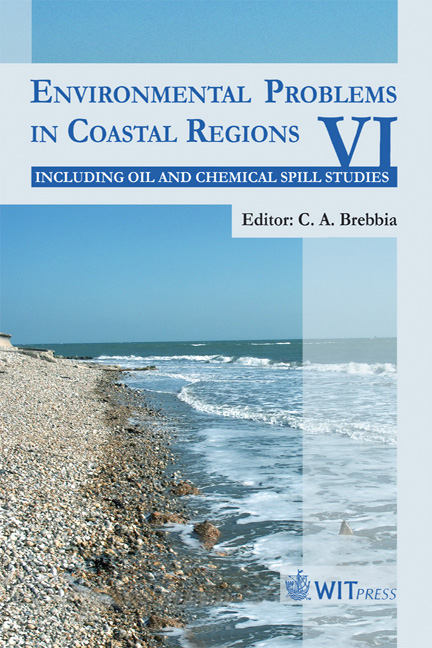Using The Mercator Ocean Forecasting System To Compute Coastal Maritime Pollution Risk Indicators On The Atlantic European Coasts
Price
Free (open access)
Transaction
Volume
88
Pages
9
Published
2006
Size
938 kb
Paper DOI
10.2495/CENV060421
Copyright
WIT Press
Author(s)
S. Besnard, E. Dombrowsky & P. Bahurel
Abstract
Mercator, the French oceanic forecast centre, provides in real-time a full 3D forecast of the ocean dynamics. Synthesizing such complex information into simple indicators useful for decision makers is a challenge in the context of GMES. We have implemented simple pollution indicators based on a semi lagrangian particle drift simulation using the Mercator surface current forecast and ECMWF wind speed. Shipping routes are the main places for genesis of oil spills. We have simulated the drift of particles sown daily along the main ship routes defined from the traffic separation schemes in the North Atlantic for a 3- year period. For each season, we count the number of particles run aground by area of one degree per one degree. According to this number we allocate a pollution risk level to the section of the coast corresponding to the grounding. We then produce the first indicator which is a map showing the pollution risk level along the shore with a traffic light color scale: green, yellow, red, with red meaning high risk. The second indicator is deduced from the first one. Particles are tracked back to their initial location to identify the potential origin of the coastal pollution. This shows sections of ship routes with potential coastal pollution risk in the case of pollutant sewage along the ship route. The robustness of the computation of these indicators was assessed using the surface current from several other GODAE operational assimilation centers such as FOAM and RSMAS-HYCOM to compute the same indicators. We have also added noise to Mercator currents to evaluate the dispersion of the results. We found that even if there are some local differences in the indicators, some results are robust; specifically we show that there are seasonal variations. Keywords: maritime coastal pollution, indicator, drift model, Mercator, operational system, ship routes, black tide, hydrocarbon pollutant.
Keywords
maritime coastal pollution, indicator, drift model, Mercator, operational system, ship routes, black tide, hydrocarbon pollutant.





